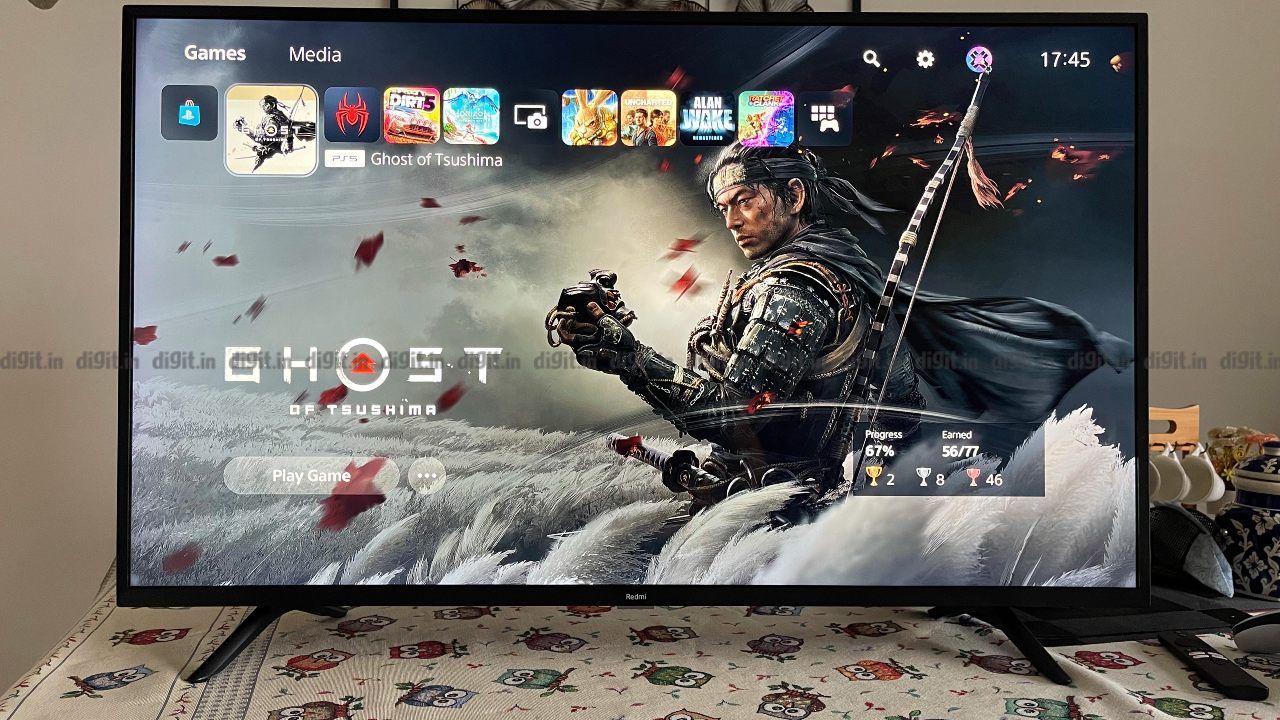
The 43-inch screen size is the only one in India where you have the option of a 4K TV and an FHD TV to choose from. More than the resolution, it is the representation of content in HDR vs SDR that matters more. While a 4K image will look crisper than 1080p, it’s the adoption of HDR on budget TVs which is underwhelming and at times, the SDR image looks better than the HDR.
Today we have with us the Redmi Smart TV X43. It is a 43-inch addition to the Redmi Smart TV X series now available in 43, 50, 55 and 65-inch screen sizes. We have reviewed the 65-inch Redmi Smart TV X65 and found it to be quite the value for money offering. In the 43-inch space, we have reviewed the Redmi FHD which is currently priced at Rs 24,999. We’ve also reviewed offerings from Realme as well. As of writing this review, the Redmi Smart TV X43 is priced at Rs 28,999 and comes with all the features of its larger siblings including support for Dolby Vision and HDR. Is it a worthy consideration above the FHD Redmi Smart TV 43?
Redmi Smart TV X43 specs at a glance
Panel Size: 43-inch (Also available in 50, 55 and 65-inch screen sizes)
Panel Resolution: 3840 x 2160p – 4K
Panel Refresh Rate: 60Hz
HDR 10 support: Yes
HDR 10+ support: Yes
Dolby Vision Support: Yes
Weight: 6.5 kgs
HDMI Ports: 3
USB Ports: 2
Bluetooth: Yes, 5.0
Wi-Fi: Yes, dual-band
Ethernet: Yes
Speakers: 30W
Built-in storage: 16GB
RAM: 2GB
Price: MRP: 28,999
Redmi Smart TV X43 Display Panel and Picture Quality
The Redmi Smart TV X43 has D-LED backlighting. As far as peak brightness is concerned, in the Vivid preset, we recorded a peak brightness of 372 nits, but in the Movie and Standard preset, you can expect peak brightness between 250 and 300 nits, which is low for HDR content. However, whether this hampers your viewing experience is something we will comment on below. Where the device impressed was with the Colorchecker Analysis, giving an average delta error of 2.9 which is quite good. Even in the grayscale 2pt, the error was below 2 indicating good performance overall. In the saturation sweeps, we have an average delta error of 2.5 which is very good, indicating a good representation of colours overall. So, while the brightness of the TV may be low for consuming HDR content, it has fairly good colour reproduction.
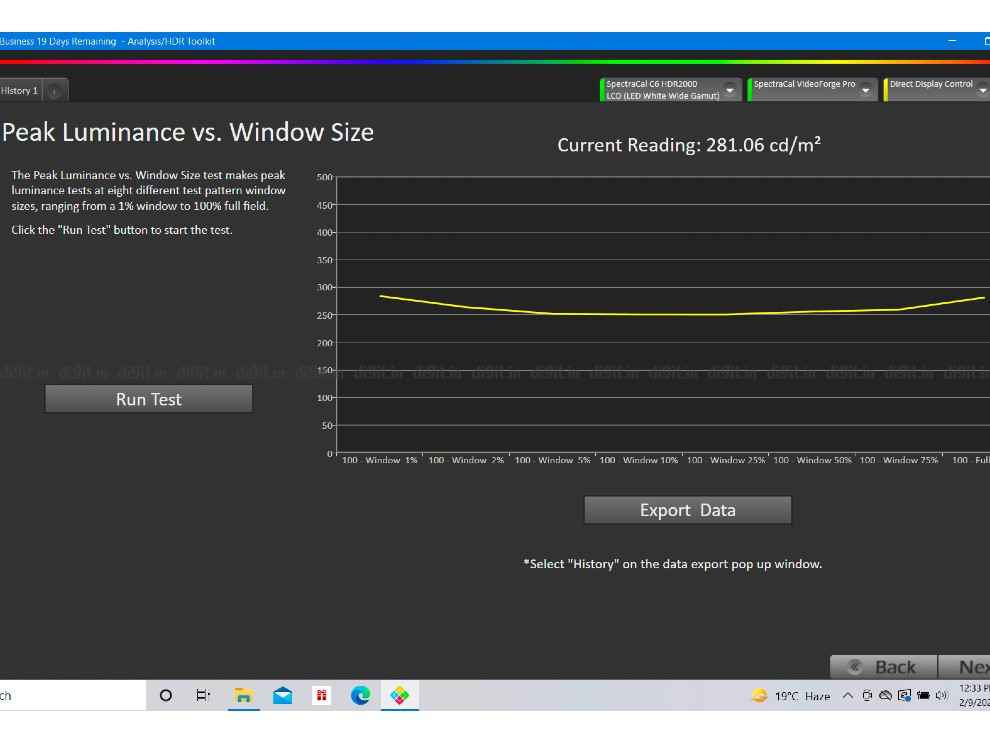
Above: Peak brightness
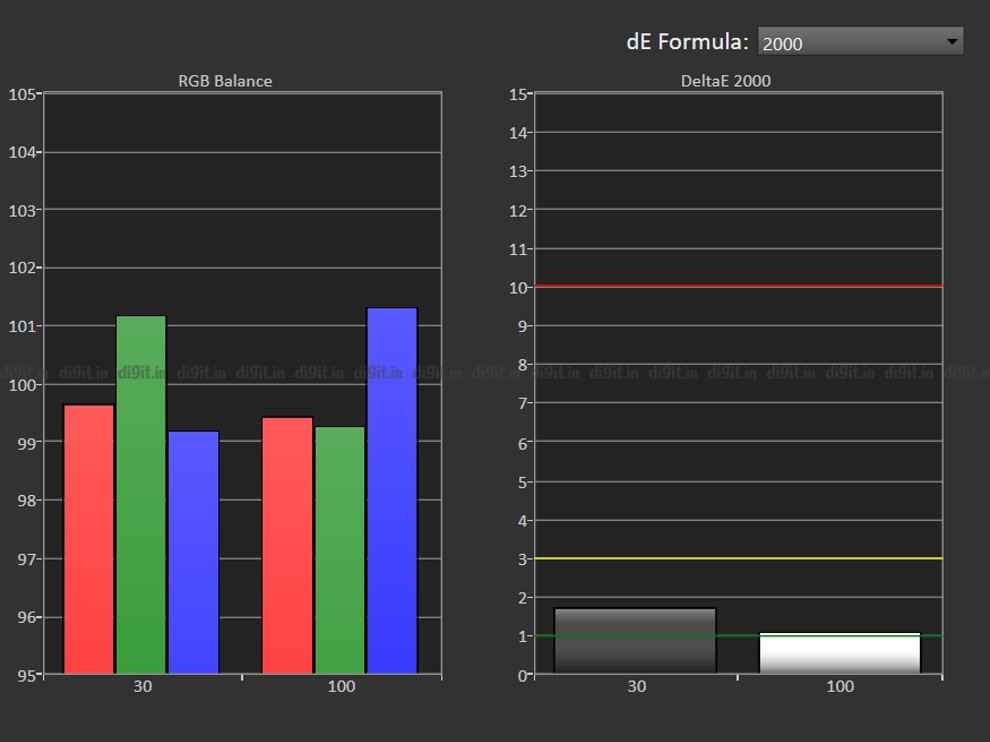
Above: Grayscale 2 point.
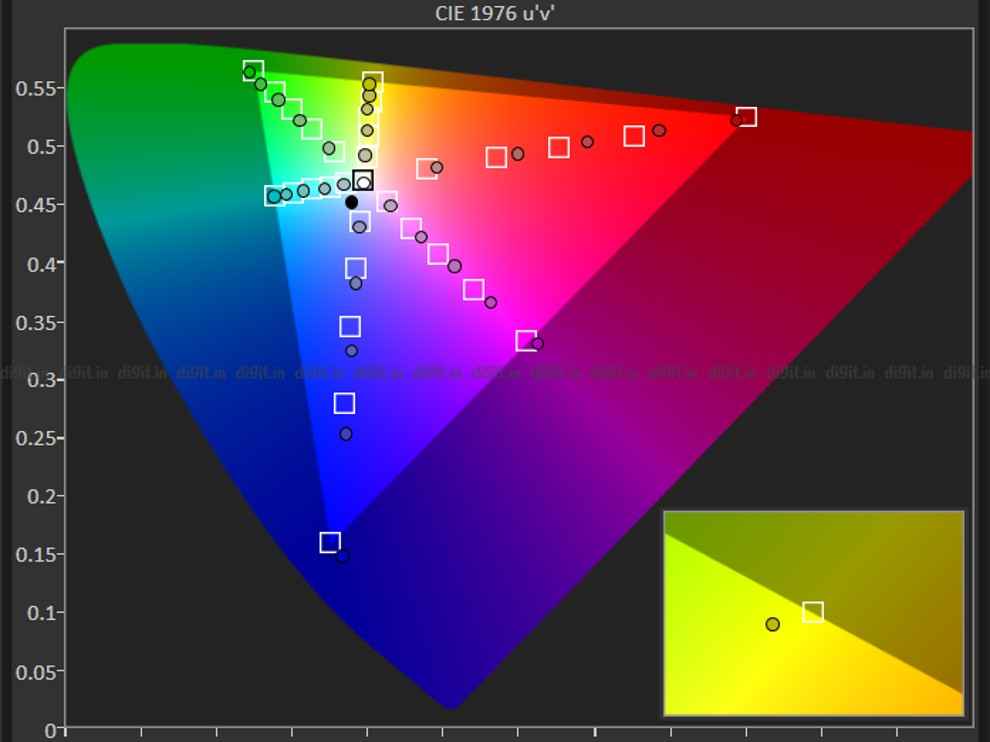
Above: Saturation sweeps of the Redmi Smart TV x43

Above: Colour Gamut Coverage
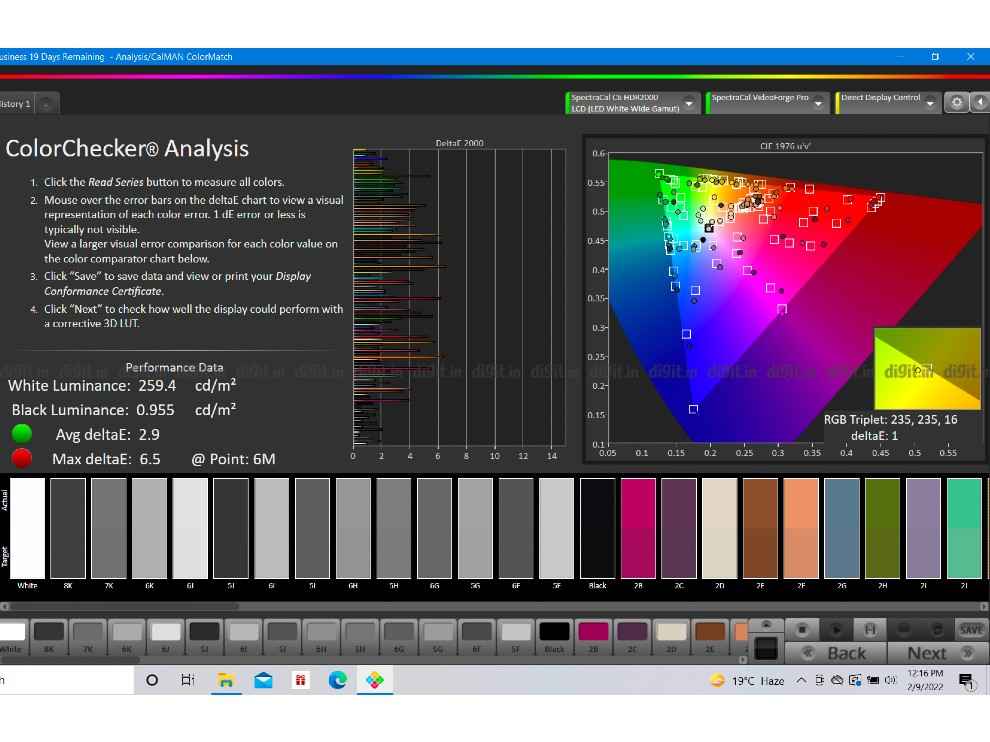
Above: ColorChecker Analysis
HDR
Like we said above, the peak brightness of the TV is nothing to write home about. But that’s not the biggest problem with budget HDR TVs. It is that the dark sequences shouldn’t look too dark and the colours should look good. That’s exactly what we found here. In a show like Our Planet (available in Dolby Vision on Netflix), we didn’t get the specular highlights as we did on other TVs with higher peak brightness, but the dark areas of this show were still quite enjoyable. Same for a show like the Grand Tour (available in HDR 10+ on Prime Video). A stark standout has to be the dark sequence we use in Jack Rayan, another HDR 10+ show on Prime Video. The sequence we use to test has a slightly darker tone on budget HDR TVs but that wasn’t the case here. It was crisp and easily enjoyable.
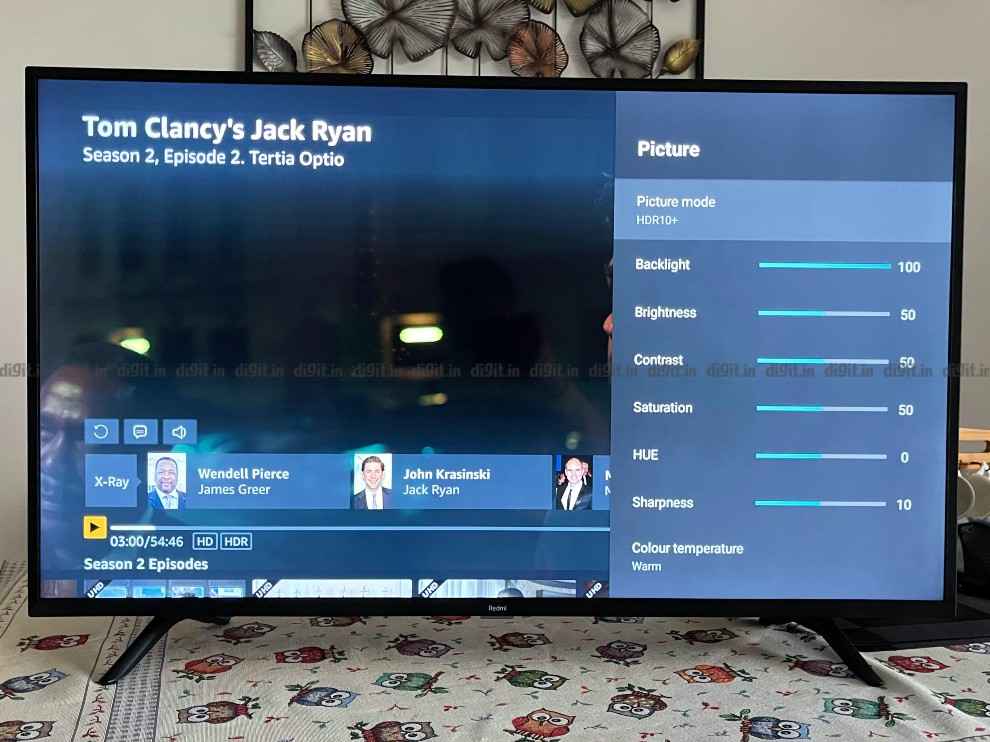
There are some occasions where the content on-screen looked slightly darker than was expected, but these moments were far and few. The Dark Knight Rises is a good example of this with most of the action in the first two-thirds of the movie taking place at night. Even though a lot of these dark sequences were easy to watch, there was some loss of detail due to the low peak brightness of the TV. But this is one example as with other pieces of content with dark sequences be it Altered Carbon, the content was easily enjoyable.
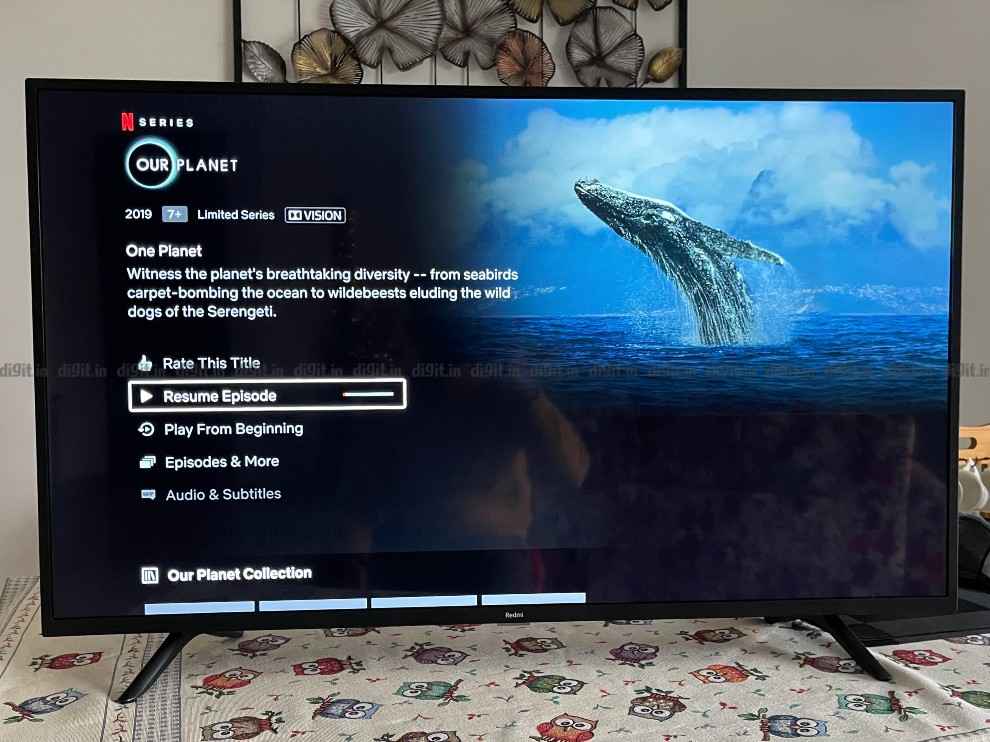
The TV does come with a lot of settings options giving you a decent amount of control. For Dolby Vision content there is Dolby Vision Bright and Dolby Vision dark and as always, keep the TV in Dolby Vision Bright irrespective of the lighting in the room. HDR 10+ only has one option while HDR 10 content has HDR Standard, HDR Vivid and HDR Movie. Here I found HDR 10 Movie worked best for almost all HDR content.
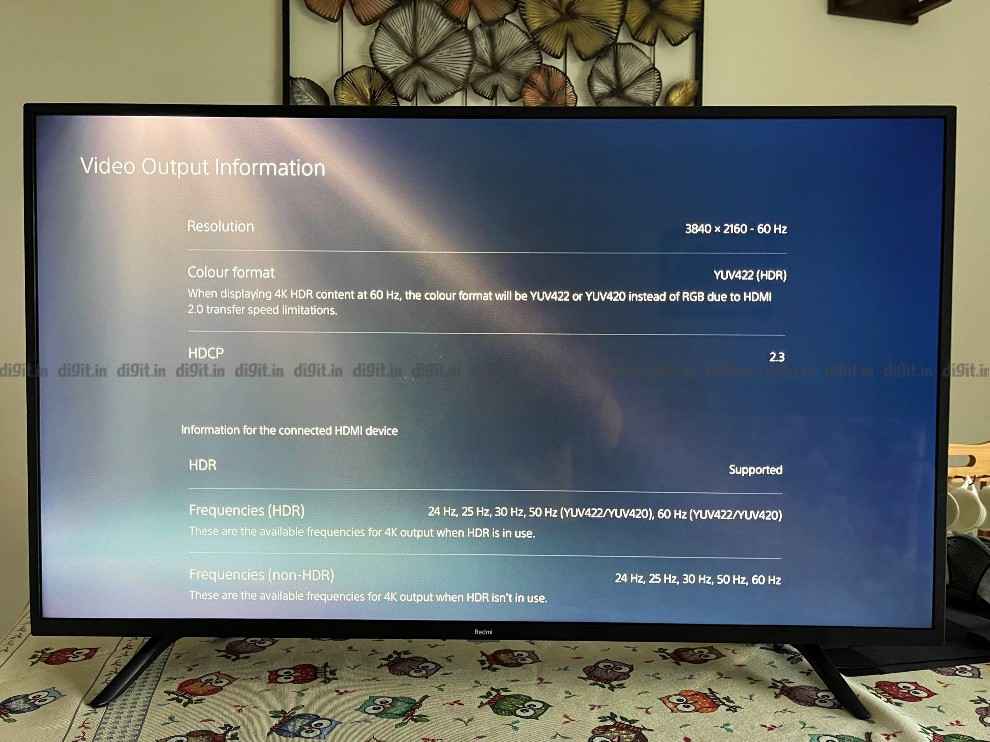
SDR
A new addition to Netflix recently was Spider-Man Far From Home. This title is available in 4K but in SDR. The details on Spider-Man’s suit are quite detailed with the reds and blues standing out. The battle with Mysterio which begins at the 1 hour 15 min mark and ends with Spider-Man being hit by a train is a good example of SDR playback with a healthy mix of colours and bright and dark sequences. The TV does a good job of reproducing these sequences and with a little bit of bias light in the room, there are almost no halo or blooming effects on the screen. The overall performance is very good for SDR.
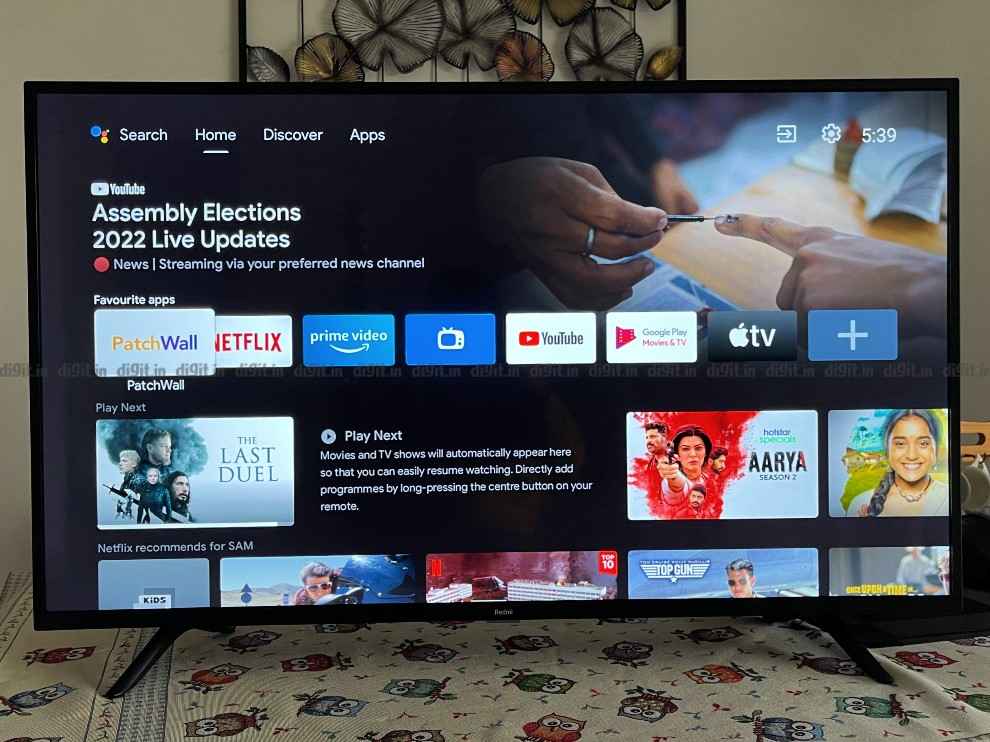
Regular SDR content, be it from a set-top box or even streaming services, look good on this TV. For watching movies and most TV shows, I recommend using the Movie preset. However, as we’ve seen on other TVs, we found that some shows like Young Sheldon, for example, look best using the standard preset despite its slightly cooler colour bias. The one thing I recommend is going into the settings and switching off motion smoothing as I am one that does not like the artificial smoothing effect in movies. That’s a personal choice as you may like it.
Redmi Smart TV X43 Gaming performance
Gaming on this TV is good overall, though we faced the same problem found on other budget HDR TVs. When you connect a PS5 (review) to the TV for the first time, you are asked to calibrate the brightness. Firing Dirt 5 (review) after calibration and you immediately realise that the TV is trying to punch way above its weight. Since Dirt 5 is an HGiG (HDR Gaming Interest Group) game, it relies on the brightness calibration between the TV and the console. You need to go into the settings of the game and readjust the brightness so the content doesn’t look burnt. Other games like Ghost of Tsushima (review) and Spider-Man: Miles Morales (review) and more look like they did on the Redmi Smart TV X65 we reviewed – good overall with the loss of some detail which is acceptable for this price point.

Redmi Smart TV X43 Audio Performance
Loud is the first thing that will come to mind when you hear the audio from this TV. It can get quite loud and fill a small room with ease. While there are a bunch of audio presets to choose from, I found leaving the TV on Standard or Movie based on the content gave the best results. The audio does lose clarity at high volumes and I found that going beyond 20-25 was just too shrill especially for movies. Below 25, the volume is clear and audible with clear dialogue in TV shows. But to enjoy a good movie, you’ll have to invest in a soundbar.
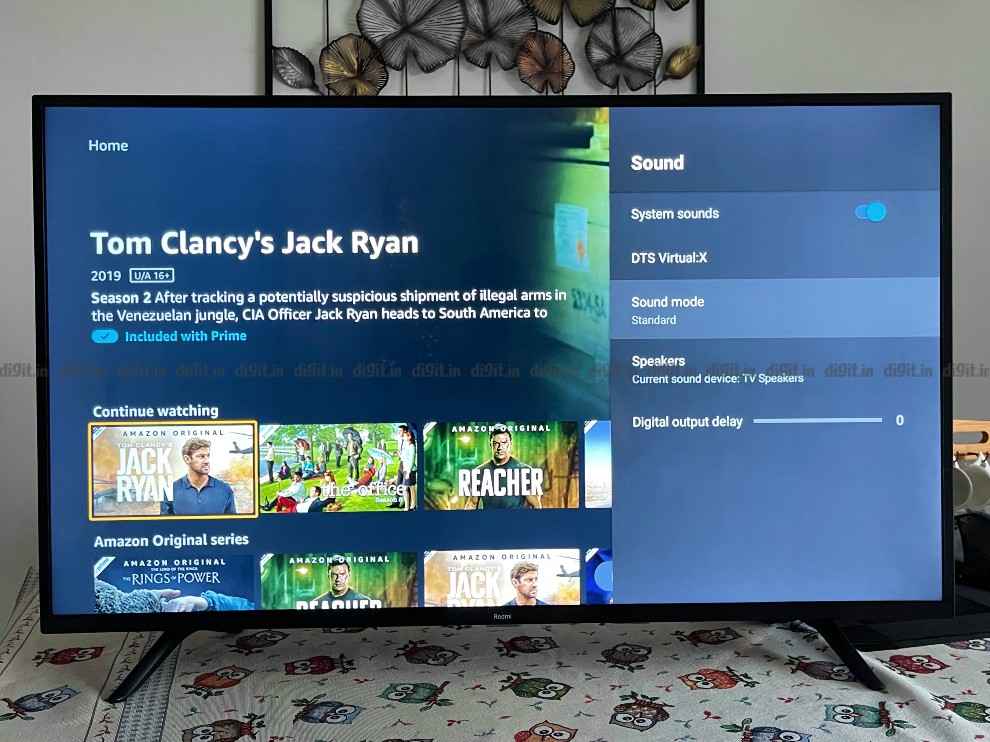
Redmi Smart TV X43: UI
Xiaomi still offers the best of both worlds – PatchWall and Android TV. Android TV UI has seen some slight changes making it more in line with Google TV UI. It has a Discover Tab that shows a curation of content from OTT apps. The home screen offers a mix of content from OTT and your app library. It’s an evolution of the Android TV UI to bring it more in line with the new Google TV UI. You also get PatchWall which has a better content-first approach and is the same that we saw on the Redmi 43-inch FHD TV, Mi QLED TV 75 (review) and even the 65-inch Redmi TV. It has the same content curation with space for lists such as IMDB top 100 list, and more lists like HDR 10+ content, Dolby Vision content, etc.
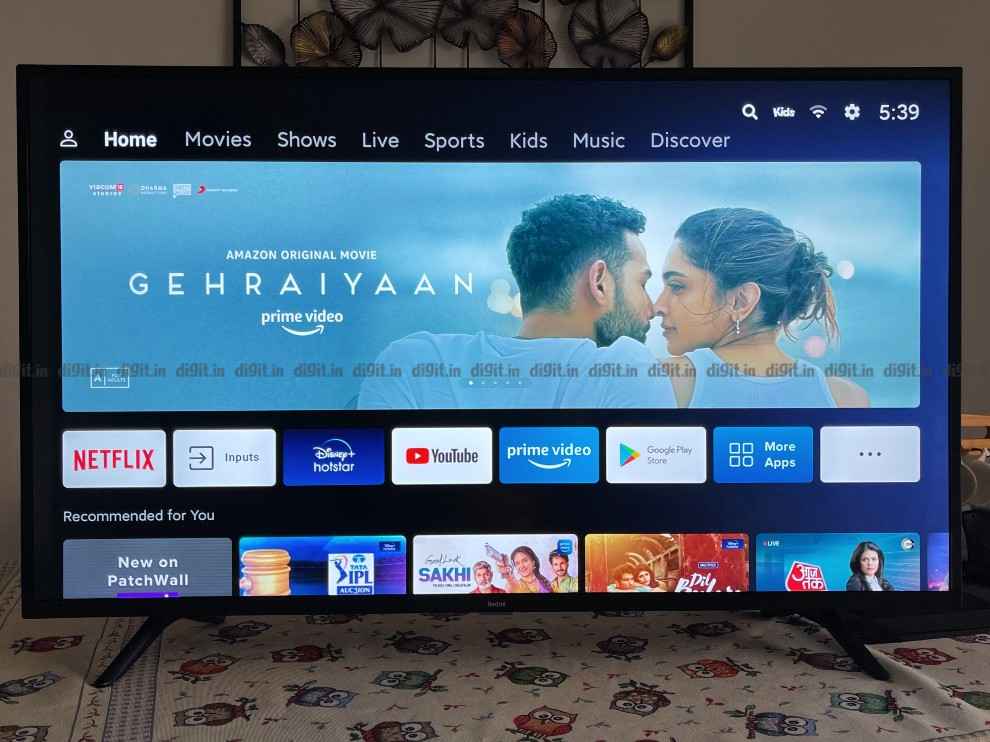
Redmi Smart TV X43 Remote control
What has changed for the better is the remote control that comes with the Redmi Smart TV X43. While it still lacks a dedicated mute button you get a new dedicated button for Disney+ Hotstar and a dedicated button to pull up the app drawer. The rest of the design and ergonomics of the remote control remain the same with a dedicated button for the voice assistant, D-pad, back button and dedicated buttons to bring up PatchWall and Android TV UI.
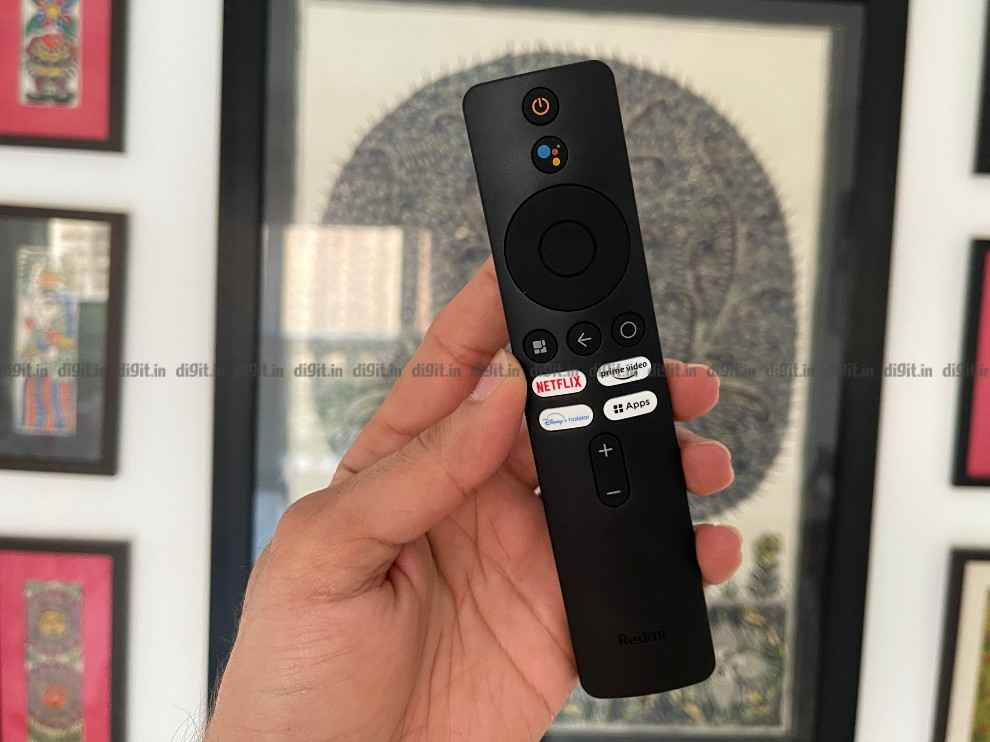
Redmi Smart TV X43: Build and design
The build and design of the Redmi Smart TV X43 are almost identical to the Redmi 43-inch FHD TV we reviewed earlier, except for a few points here and there which you wouldn’t notice if you didn’t know what you were looking for. The TV has relatively slim bezels all around considering the price point and the TV is held in place by 2 simple plastic feet.
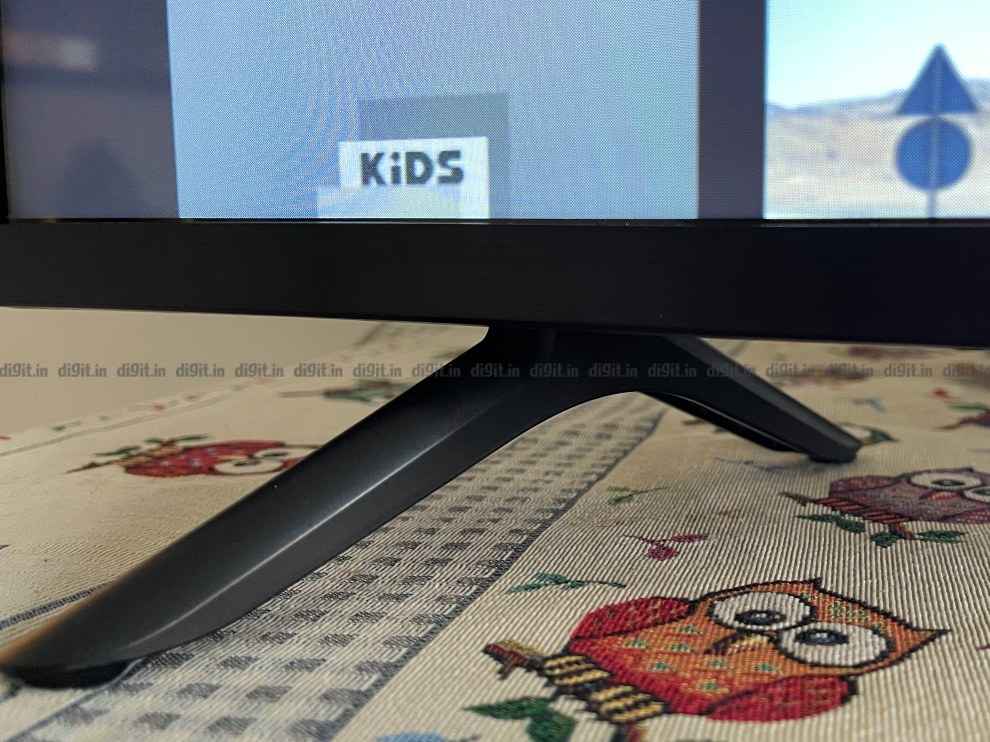
For connectivity, we have 3 HDMI ports, 2 USB ports, an optical port, a 3.5mm port, AV in and an ethernet port, along with an antenna port. There is also Bluetooth 5.0 and dual-band Wi-Fi which is nice. Overall, it is a simple looking TV and that’s ok, considering you’ll spend more time with the display which has decent performance.
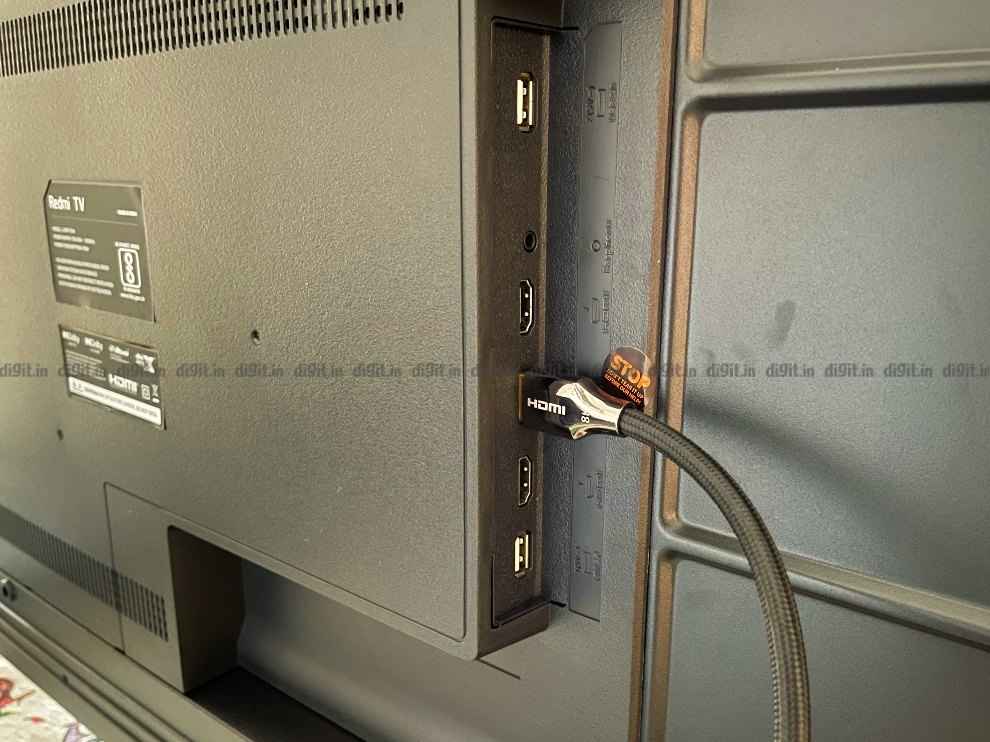
Bottom Line
What the Redmi Smart TV X43 has going for it are the same features that made its larger siblings an enticing offering. The TV is packed with features including support for almost all HDR formats, a host of connectivity options and a simple design. Its build is at par with other budget TVs we’ve tested. The panel of the TV has very good colour reproduction for HDR and SDR but the peak brightness is lower than what we’d like for an immersive HDR experience. The audio output is average. Considering the 29K price point this is a good option for those looking for a budget 4K 43-inch TV.
[ad_2]
Source link






